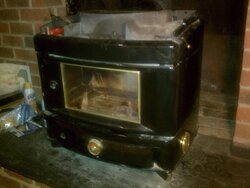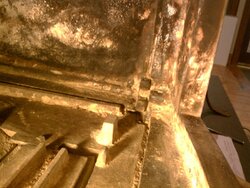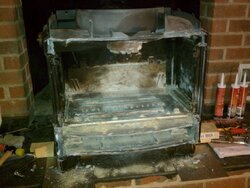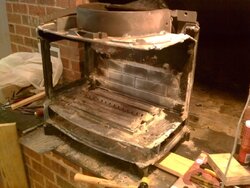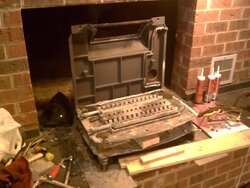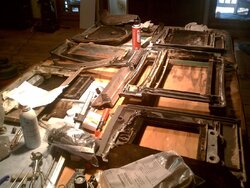Have been using this stove for nearly twenty years. Love it!! Last winter noticed the damper was
not closing properly. Removed the top of the stove and found that the inner top plate had warped and
cracked, preventing the damper to lay flat. Must have had a "run away fire" at some time that cause it
to over heat. I've purchased a replacement inner top plate from Discount Stove, with new gaskets.
Now, how the HECK do I dissemble the stove to facilitate the repair? I've read that VC stoves were
built tongue and groove, but I'm not sure how to proceed. Also, I notice that furnace cement was used in several areas. Do I chisel those parts free from the cement, or is there another method?
Any help will be most appreciated!
Thanks from Raleigh, NC
not closing properly. Removed the top of the stove and found that the inner top plate had warped and
cracked, preventing the damper to lay flat. Must have had a "run away fire" at some time that cause it
to over heat. I've purchased a replacement inner top plate from Discount Stove, with new gaskets.
Now, how the HECK do I dissemble the stove to facilitate the repair? I've read that VC stoves were
built tongue and groove, but I'm not sure how to proceed. Also, I notice that furnace cement was used in several areas. Do I chisel those parts free from the cement, or is there another method?
Any help will be most appreciated!
Thanks from Raleigh, NC



